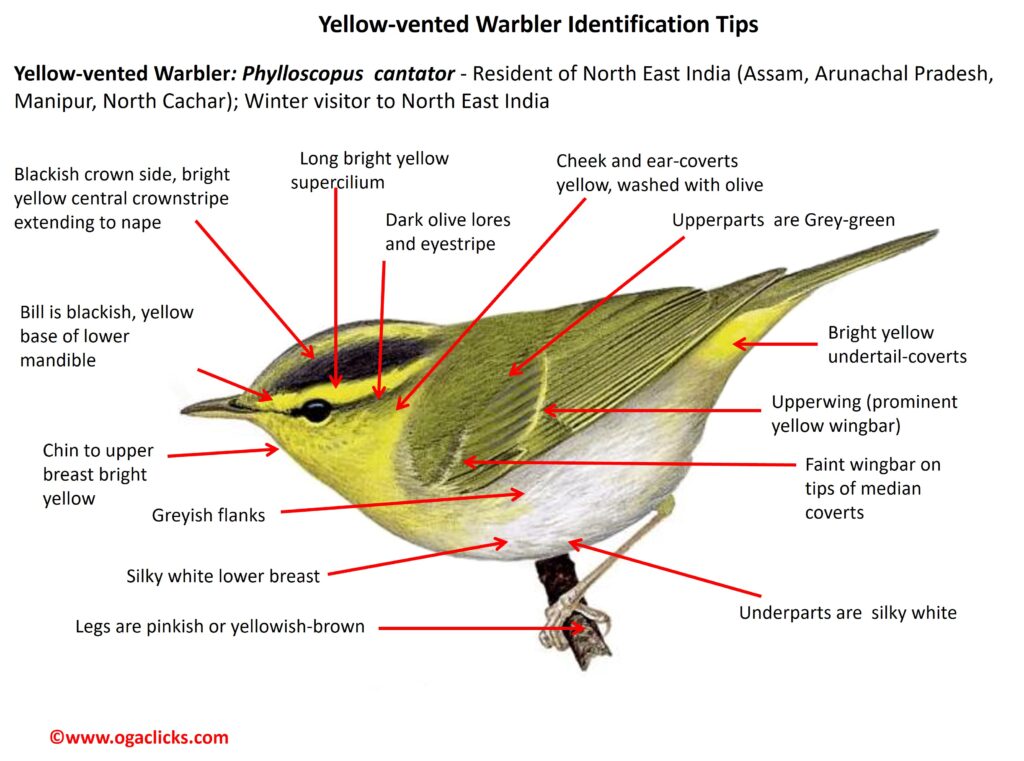
Yellow-vented Warbler Phylloscopus cantator
Etymology:
- Phylloscopus: Greek word phullon – leaf; skopos – seeker
- Cantator: Latin word for “Singer”
Distribution: Resident of North East India (Assam, Arunachal Pradesh, Manipur, North Cachar); Winter visitor to North East India.
Details: Size of 10–11 cm; wt.of 6–7 g. It is a medium-sized leaf-warbler with much bright yellow in plumage. It has a prominent head pattern of blackish crown side, bright yellow central crownstripe extending to nape, and long bright yellow supercilium. The lores and eyestripe are dark olive, cheek and ear-coverts are yellow, washed with olive. The upperparts are grey-green, tips of greater upperwing-coverts are yellow forming prominent yellow wingbar. It has sometimes a faint wingbar on tips of median coverts. The flight-feathers and tail feathers are brown, edged bright yellow-green. The chin to upper breast is bright yellow, contrasting with silky white lower breast to vent and greyish flanks. It has bright yellow undertail-coverts. The iris is dark brown; upper mandible is brown, lower mandible is straw-yellow; legs are variably pinkish or yellowish-brown. Both the sexes are alike. The juvenile is like adult, but upperparts are duller, and yellow on underparts duller or yellowish-white.
Habitat: It breeds in dense broadleaf evergreen forest and bamboo, between 300 m and 2000 m. In non-breeding season it is found in open deciduous forest at lower levels, from sea-level up to 1500 m.
Food habits: It eats small insects and larvae. It forages alone or in pairs in breeding season, when generally shy and remains within canopy cover. In winter, it is often found in loose flocks and also joins mixed-species feeding parties. It actively forages in lower and middle levels of large trees, bushes, and bamboo clumps. It takes food items from within foliage, but also makes short dashing flights in pursuit of insects.
Breeding habits: They breed from Apr to Jun. The nest is built by both sexes. The nest is a ball-shaped structure of grasses, placed on ground among fallen leaves in roots of tall tree, in hollow in bank or low down in dense bush. They lay a clutch of 3–4 egg. The incubation is done by both sexes.